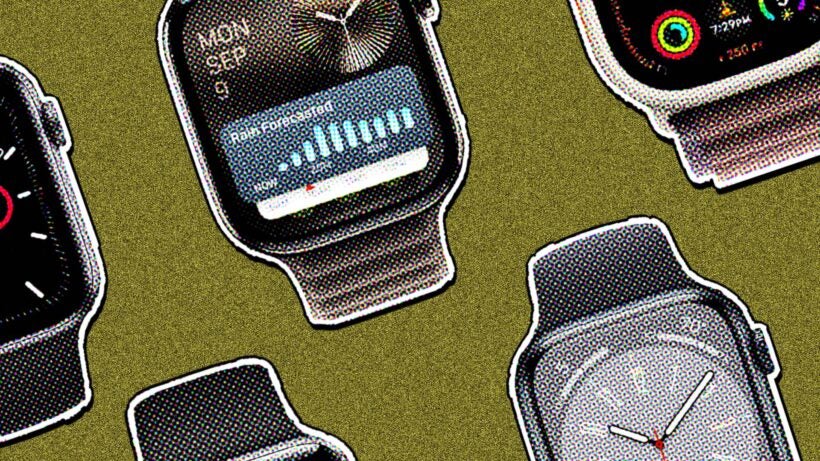The Apple Watch began with two simple options, but there are now three different models and four distinct case sizes to choose between. That doesn’t even include the models not officially on sale.
While the band of any Apple Watch is changeable and adjustable, the size of the case itself is crucial to get right before purchasing.
Here’s the breakdown of the case sizes in each modern Apple Watch generation:
- Apple Watch Series 10 (2024) – 42/46mm
- Apple Watch Ultra (2022)/Ultra 2 (2023) – 49mm
- Apple Watch SE 2 (2022) – 40/44mm
- Apple Watch Series 9 (2023) – 41/45mm
- Apple Watch Series 8 (2022) – 41/45mm
- Apple Watch Series 7 (2021) – 41/45mm
- Apple Watch Series 6 (2020) – 40/44mm
The latest 46mm Series 10 impressed us with its big display for easy-to-read text. However, it will be far too big for some people. It’s important to remember that the smallest size has also increased and is a viable option for many people, not just those with the most petite wrists.
If you’re wondering which size Apple Watch you should get, we’ll show you how to measure your wrist and find the right fit. This guide also reveals the complete dimensions, weights, and essential details of band compatibility.
Apple Watch sizes explained

- Apple Watch SE (and Series 4, 5, 6): 40mm and 44mm
- Apple Watch Series 10: 42/46mm
- Apple Watch Ultra/Ultra 2: 49mm
Over the years, the Apple Watch has gradually increased in size, now offering 42mm and 46mm options. Consequently, the smallest Series 10 matches the size of the original Apple Watch’s largest model. It’s quite astonishing.
The Apple Watch Series 9 retains the 41mm and 45mm case sizes introduced with the Series 7 in 2021, meaning older bands will remain compatible with the latest smartwatch. Furthermore, 40mm and 44mm bands are also compatible with the new, larger size.
The Apple Watch Series 4, Series 5, and Series 6 models come in 40mm and 44mm, as do the Apple Watch SE (2020) and SE (2022).
You can no longer buy the Series 3 or lower, which used 38mm and 42mm case sizes.
These measurements, we should make clear, denote the size of the bezel, though the straps do always play a role in the specific fit of the smartwatch on your wrist.
Full list of Apple Watch case sizes and weights
Below, we’ve put the key design specs—dimensions and weight—of the current generation of Apple Watch devices into a table.
| Model | Dimensions (mm) | Weight (GPS) | Weight (GPS + Cellular) | Weight (Titanium) |
|---|---|---|---|---|
| Apple Watch SE (40mm) | 40 x 34 x 10.7 | 26.4g | 27.8g | N/A |
| Apple Watch SE (44mm) | 44 x 38 x 10.7 | 32.9g | 33.0g | N/A |
| Apple Watch Ultra 2 (49mm) | 49 x 44 x 14.4 | 61.4g | N/A | N/A |
| Apple Watch Series 10 (42mm) | 42 x 36 x 9.7 | 30.0g | 29.3g | 34.4g |
| Apple Watch Series 10 (46mm) | 46 x 39 x 9.7 | 36.4g | 35.3g | 41.7g |
Explained: Apple Watch band sizes

There is cross-compatibility between some Apple Watch sizes/models and different bands. However, the operative word there is ‘some’—and you’ll need to understand a few crucial rules if you’re to use old bands on a new device (or vice versa).
- Band sizes for 38mm, 40mm, and 41mm Apple Watch cases are interchangeable
- Apple Watch straps for 42 mm, 44 mm, 45 mm, and 46 mm case sizes also all work together
- All 44mm, 45mm, and 46mm straps will all work with the 49mm Apple Watch Ultra/Ultra 2
For the first time, Apple Watch Series 10 small and large options use the same strap size. You can also use ‘regular’ Apple Watch bands on the Ultra model.
These rules should apply to third-party options, too, but read reviews for your specific Apple Watch device before you purchase.
- Compare: Apple Watch Ultra vs. Ultra 2
Sizing Solo Loop bands
Be aware that for some models, you need to select a size when purchasing. Others, such as the Sport bands, include both S/M and M/L strap options for you to choose from.
The Apple Solo Loop bands come in a variety of sizes, and Apple provides a tool to measure your wrist to help you choose the correct size. That’s crucial — and take it from our experience, you don’t want to get this wrong.
We recommend using a proper tape measure as well. If it’s a bit loose, obtaining accurate health data could be a challenge.
How to measure your wrist for the Apple Watch

The fit of your watch is somewhat subjective, but it’s essential to know the size of your wrist before purchasing the Apple Watch or an additional band.
So, how can you be certain? Well, grab a flexible tape measure and measure that wrist.
Place the strip just below your wrist bone and around the area where you typically wear the band. Wrap it around your wrist and align it with the sizes of your watch model.
Generally speaking, a small wrist measures 5 to 6.5 inches, while a large wrist ranges from 7 to 8.5 inches. However, a key benefit of many Apple Watch bands is that they can be adjusted using Velcro or the perforations in sports straps to achieve a precise fit.
Just don’t go too tight or too loose. While it can become uncomfortable, it also impacts the accuracy of the Apple Watch’s heart rate monitor.




